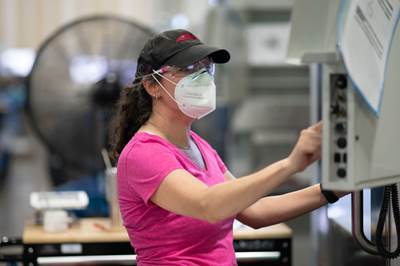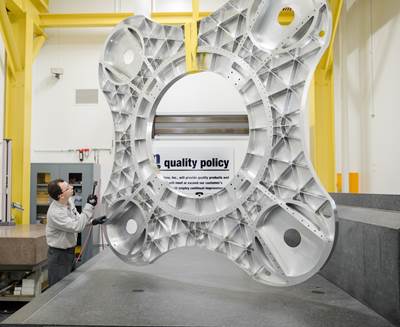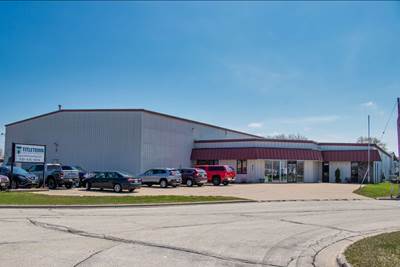Throughput Supports the Bottom Line
Udo Jahn, general manager of Modern Engineering, says focusing on throughput is a more reliable way of increasing the bottom line than focusing on cycle time alone.
Share





Over the decades, I have been bombarded by people selling products meant to reduce cycle time. At first, I invested in these products, but those reductions in cycle time never added to the bottom line the way these products were advertised to. It was frustrating and expensive. After a few years, I grew cynical and stopped investing in these cycle-time reducers.
This cynicism stayed with me for many years, and I ignored the constant stream of products that promised to reduce cycle times. I was even more frustrated because these bombardments were accompanied by testimonials. I dismissed these as being exceptions and not the norm, thinking that, in most cases, support for the products was very poor and coaching was nonexistent.
Then one day, I began to think that I might be looking at this the wrong way, and that I might need to reduce cycle time by looking at throughput. The problem with pure cycle-time reduction efforts was that they did not improve the bottom line — but maybe concentrating on increasing throughput would.
This turned out to be a eureka moment. I began to search for and seek out products and processes that would increase my shop’s throughput instead of concentrating solely on cycle time.
In concentrating on increasing throughput, we found our bottlenecks: There was a split between having the wrong equipment and using the wrong processes.
In terms of equipment, we began to move more to automation, which included pallet systems and robotics. Unattended machining helped in many ways, notably increasing quality because the operator had more time to examine parts and make corrections, rather than having to concentrate on loading parts as quickly as possible. We also saw more throughput because the equipment ran more or less overnight and through coffee breaks and lunches. We increased throughput, which increased the bottom line — and ended up having nothing to do with cycle time.
This shift also challenged my shop’s processes. We changed the way we scheduled equipment to achieve better throughput. ERP and monitoring systems were invaluable here, as we could monitor and change bottlenecks holding throughput back.
I have seen many shops come and go because they compete by trying to produce products as quickly as possible without focusing on good throughput. In many cases, this is because they are not coached to put importance on throughput. I cannot argue that cycle time is unimportant, but it is secondary to throughput.
The issue with this focus on cycle time is that our industry has been trained to think with an accounting or quoting mentality. This has been hardwired into many of us. We come up with pricing based on cycle time, but decreased cycle time does not necessarily mean an increase in throughput and a better bottom line.
I definitely believe that shops need to start concentrating on increasing throughput instead. This will lead to many changes in buying equipment and will lead to better processes for moving jobs through the shop, higher quality (with the right equipment) and a more profitable bottom line.
Related Content
Which Approach to Automation Fits Your CNC Machine Tool?
Choosing the right automation to pair with a CNC machine tool cell means weighing various factors, as this fabrication business has learned well.
Read MoreTranslating a Prototyping Mindset to Production
The experimental mindset that benefited BDE Manufacturing Technologies as a prototype job shop has given it an adaptable edge as a production facility.
Read MoreFour-Axis Horizontal Machining Doubles Shop’s Productivity
Horizontal four-axis machining enabled McKenzie CNC to cut operations and cycle times for its high-mix, high-repeat work — more than doubling its throughput.
Read More4 Steps to a Cobot Culture: How Thyssenkrupp Bilstein Has Answered Staffing Shortages With Economical Automation
Safe, economical automation using collaborative robots can transform a manufacturing facility and overcome staffing shortfalls, but it takes additional investment and a systemized approach to automation in order to realize this change.
Read MoreRead Next
Driving Continuous Improvement with a Quality-First Mindset
A continuous improvement, quality-first mindset can help shops improve upon key metrics — across all departments.
Read MoreHonesty and Humility in Leadership
Authenticity and an open culture are companies’ best defenses against crises, and can help them emerge from crises stronger than when they started.
Read MoreOne Manufacturer's Trash: Lessons Learned from Moving Facilities
Titletown Manufacturing's operations manager reflects on 13 years in the same facility, the excitement of moving to a new one and finding use for what he thought was trash.
Read More






























